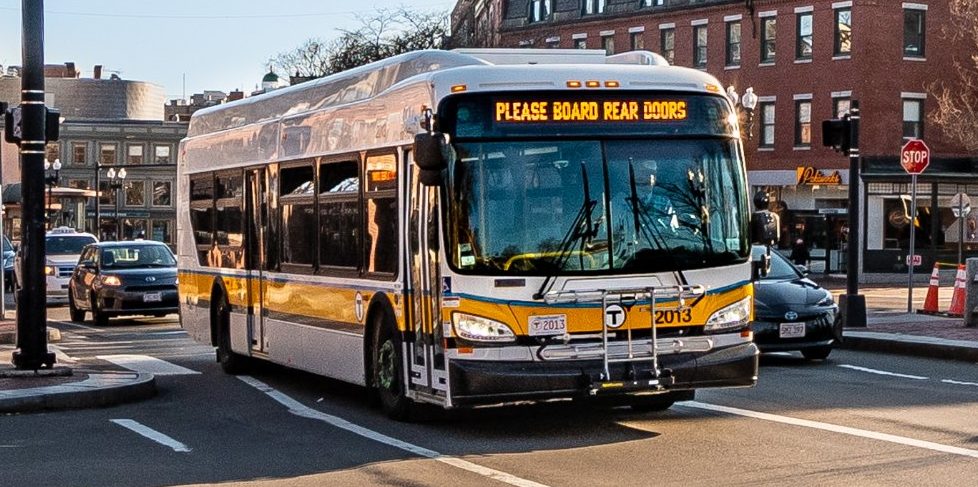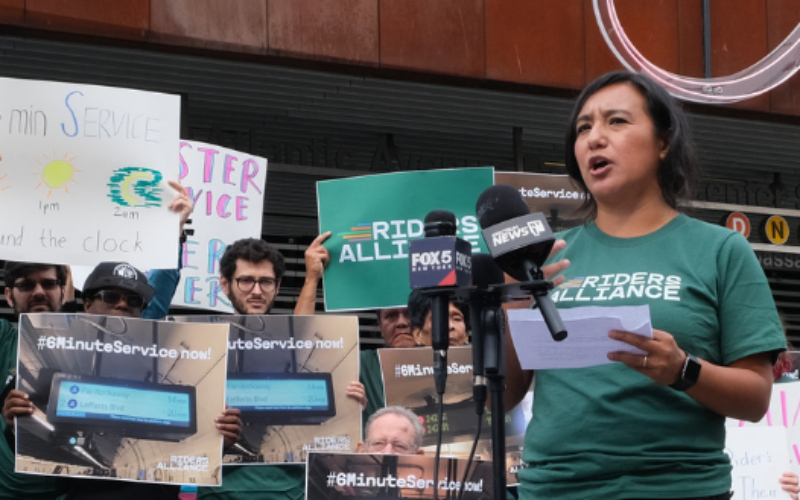
Image Credit: MBTA
In response to the COVID-19 pandemic, many transit agencies have reduced service to Saturday or Sunday schedules. While this made sense as a quick first step to conserve resources and enable more transit workers to stay home if necessary, agencies can’t stop there. Further service adjustments are necessary to provide essential mobility and give riders sufficient space between each other.
To ensure that service is meeting the needs of essential workers, agencies should look to data collected over the past month and modify service to meet the demand. Agencies should also seek feedback from vehicle operators and riders to inform their response. While not as precise as automated methods, the experience of actual people provides a valuable view of how emergency service plans are performing.
Transit agencies typically measure ridership with automatic passenger counters (APCs) and farebox data. APCs use sensors to detect people as they enter and exit the bus. This data allows agencies to count riders getting on and off at each stop and estimate the passenger loads on each run at various points on the route. Farebox data provides similar information to APCs, reporting the number of passengers boarding and paying the fare – though this leaves out people who don’t pay the fare, and it cannot measure where passengers exit.
Boston’s MBTA combined APC data with modeling based on historical ridership patterns to prioritize essential workers as the agency created its COVID-19 emergency plan. The MBTA is now running an enhanced version of the Saturday schedule, a modification of the agency’s existing winter storm emergency plan. Like the Saturday schedule, the COVID-19 service plan reduces frequency the most during “peak hours” — which is when ridership has fallen the most. Departing from the Saturday schedule, the MBTA has added service to busy routes to reduce crowding, including routes serving the Longwood Medical Area and other key medical facilities.
In San Francisco, the SFMTA has used its APC data to monitor changes in ridership after implementing the COVID-19 Muni Core Service Plan. The agency has observed that demand picks up earlier in the day but has a less pronounced peak, with ridership levels remaining steady until shortly after 5 p.m. Additionally, SFMTA has observed a smaller difference between weekday and weekend ridership. This data will inform further SFMTA service adjustments as the situation evolves.
APC and farebox data do have limitations. At the moment, farebox data is unavailable to many agencies that have gone fare-free to reduce the risk of transmitting the virus. APC data does not provide agencies with a real-time view of ridership, as most agencies must collect and process data to create the ridership analysis service planners rely on. Further, many agencies don’t yet have APCs fleetwide, making data collection challenging and affecting the ability to create finely-targeted service plans.
Some agencies have turned to other sources to supplement APC and farebox data: feedback from vehicle operators and riders.
Along high-priority routes in Pittsburgh, for example, the Port Authority of Allegheny County has placed buses on standby, which can be put into service immediately when an operator reports high ridership and overcrowding. In addition to allowing the Port Authority to respond quickly when buses become too crowded, the bus operator reports will inform future changes to regularly scheduled service.
Rider feedback has also been a valuable resource to agencies. 311 calls, emails, and tweets to agencies give management a view into the situation on the ground. SFMTA has used feedback from riders and complaints lodged by other city departments and elected officials to monitor gaps in service. Other agencies should look to its example and keep an open ear to comments from the public.
 New TransitCenter Report: To Solve Workforce Challenges Once and For All, Transit Agencies Must Put People First
New TransitCenter Report: To Solve Workforce Challenges Once and For All, Transit Agencies Must Put People First
TransitCenter’s new report, “People First” examines the current challenges facing public sector human resources that limit hiring and retention, and outlines potential solutions to rethink this critical agency function.
Read More Built to Win: Riders Alliance Campaign Secures Funding for More Frequent Subway Service
Built to Win: Riders Alliance Campaign Secures Funding for More Frequent Subway Service
Thanks to Riders' Alliance successful #6MinuteService campaign, New York City subway riders will enjoy more frequent service on nights and weekends, starting this summer. In this post, we chronicle the group's winning strategies and tactics.
Read More